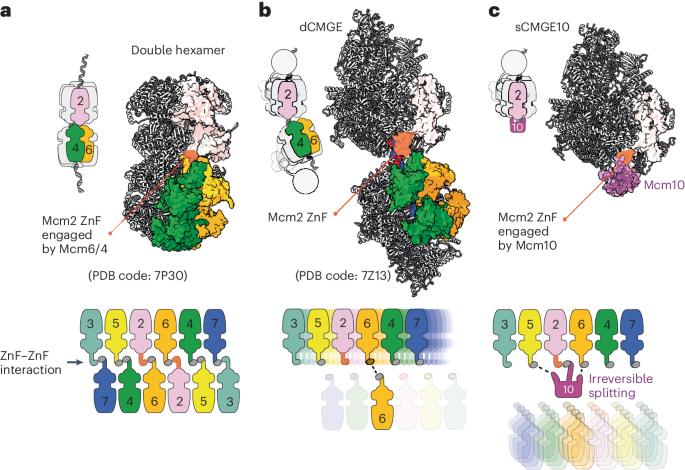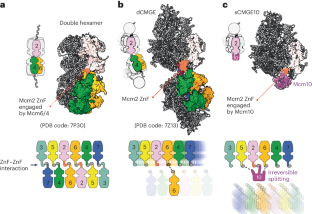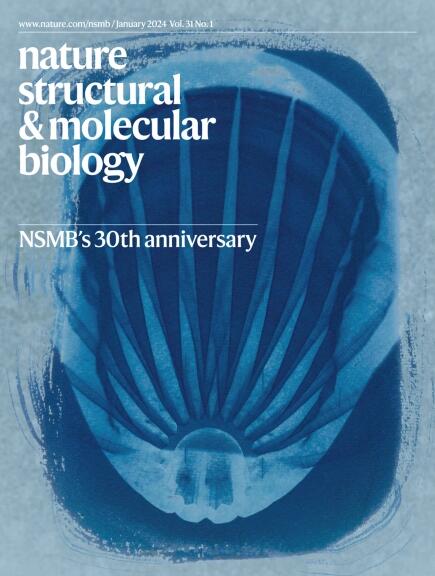Mcm10 如何将复制前复合物转化为两个不同的 DNA 叉
IF 12.5
1区 生物学
Q1 BIOCHEMISTRY & MOLECULAR BIOLOGY
引用次数: 0
摘要
DNA复制源激活的低温电子显微镜(cryo-EM)成像解释了微型染色体维护(MCM)蛋白同源物Mcm10在启动过程中的作用。Mcm10 充当楔子,将激活的复制螺旋酶的两个 MCM 六聚体分开。然后,随着 MCM 六聚体的变化,促进两条 DNA 链拓扑分离的分歧复制叉就建立起来了。本文章由计算机程序翻译,如有差异,请以英文原文为准。


How Mcm10 converts the pre-replication complex into two diverging DNA forks
Cryo-electron microscopy (cryo-EM) imaging of DNA replication origin activation explains the role of Mcm10, a minichromosome maintenance (MCM) protein homolog, during initiation. Mcm10 acts as a wedge to split the two MCM hexamers of the activated replicative helicase. Diverging replication forks are then established, with changes in the MCM hexamers that promote the topological separation of two DNA strands.
求助全文
通过发布文献求助,成功后即可免费获取论文全文。
去求助
来源期刊

Nature Structural & Molecular Biology
BIOCHEMISTRY & MOLECULAR BIOLOGY-BIOPHYSICS
CiteScore
22.00
自引率
1.80%
发文量
160
审稿时长
3-8 weeks
期刊介绍:
Nature Structural & Molecular Biology is a comprehensive platform that combines structural and molecular research. Our journal focuses on exploring the functional and mechanistic aspects of biological processes, emphasizing how molecular components collaborate to achieve a particular function. While structural data can shed light on these insights, our publication does not require them as a prerequisite.
 求助内容:
求助内容: 应助结果提醒方式:
应助结果提醒方式:


